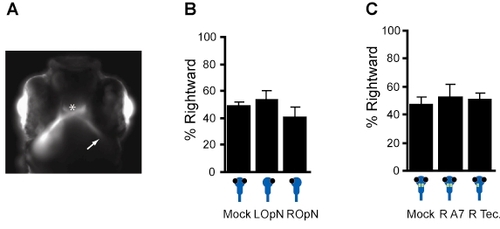- Title
-
Distinct Retinal Pathways Drive Spatial Orientation Behaviors in Zebrafish Navigation
- Authors
- Burgess, H.A., Schoch, H., and Granato, M.
- Source
- Full text @ Curr. Biol.
|
Controls for lesion analysis experiments, related to Figure 4 |

